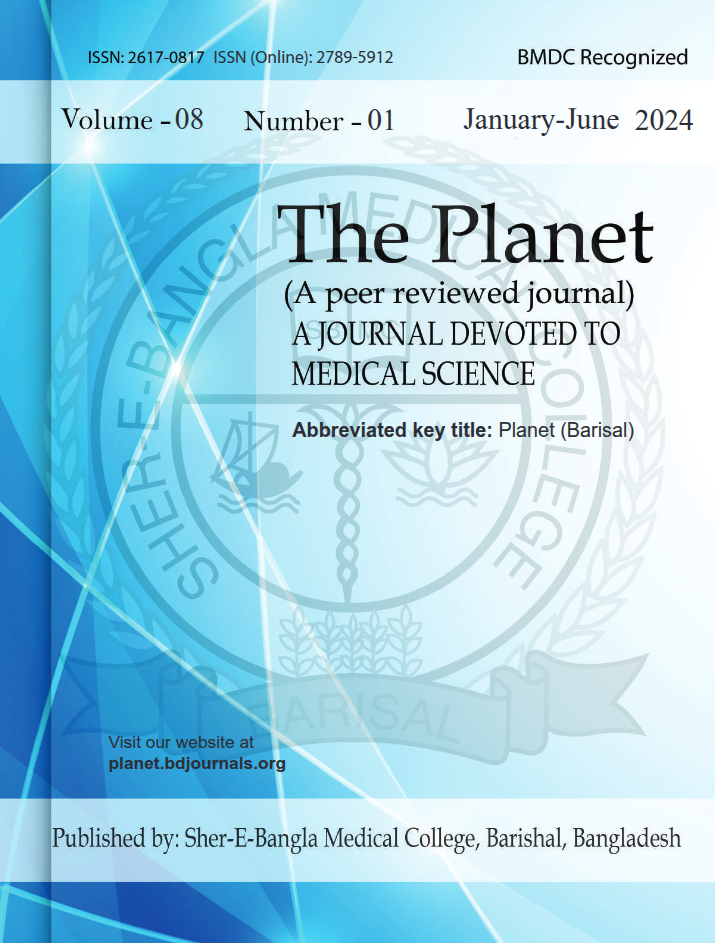Published 28-12-2024
Keywords
- Alcohol abuse,
- Hanging,
- Psychiatric disorder,
- Self-poisoning,
- Suicide
Copyright (c) 2024 The Planet

This work is licensed under a Creative Commons Attribution 4.0 International License.
How to Cite
Abstract
Background: This study compares the socio-demographic profiles and motives behind hanging and poisoning in urban and rural areas, highlighting differences driven by accessibility, intent, and underlying social, economic, and psychological factors. Methods & Materials: This was a comparative cross-sectional study that was conducted at department of Forensic Medicine and Toxicology, Shaheed Ziaur Rahman Medical College Hospital, Bogura, Bangladesh from July, 2022 to June, 2023. A total of 167 cases of hanging and poisoning incidents were included in the study. Data on the characteristics and presentations of these incidents were collected to facilitate a comparison between rural and urban cases. The data analysis was performed using SPSS version 23.0. Results: In this study on hanging and poisoning deaths, no significant differences were found between urban and rural participants in the method of death (p=0.4059). However, the distribution of causes of death differed slightly between the two groups. In the urban group, 21% of poisoning cases and 52% of hanging cases resulted in death, while in the rural group, 27% of poisoning cases and 59% of hanging cases were fatal. Additionally, significant differences were observed in financial problems (p=0.033) and interpersonal conflict (p=0.019) between the two groups. Conclusion: This study reveals no significant differences in death methods between urban and rural participants, though variations in death distribution by hanging and poisoning exist. Socio-clinical factors like financial problems and interpersonal conflicts are more prevalent in urban areas.



